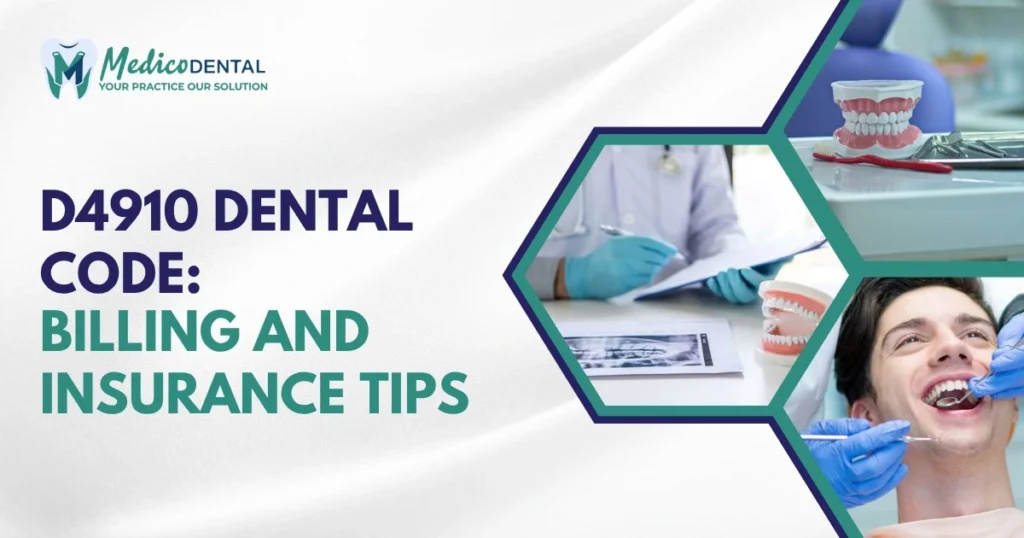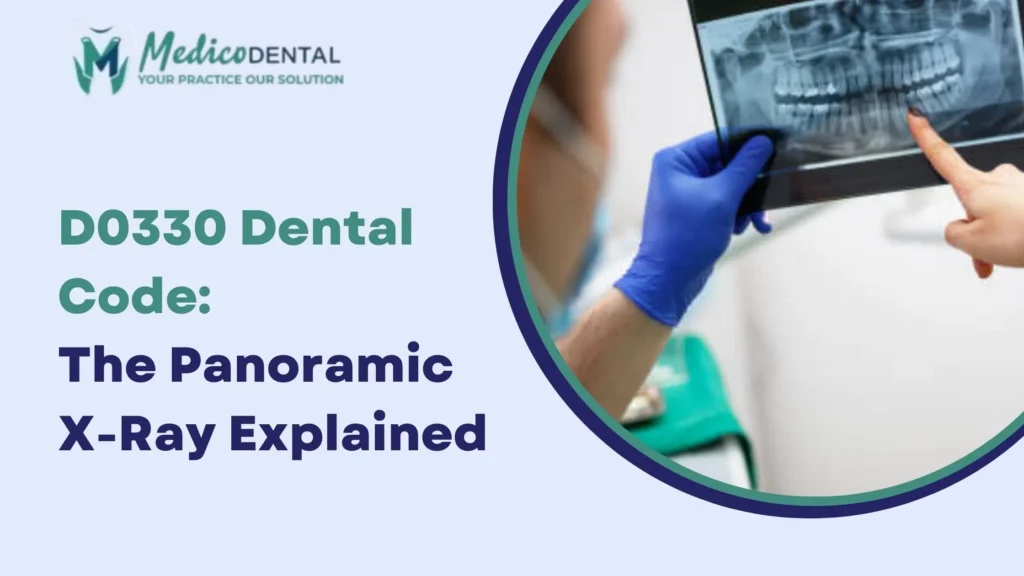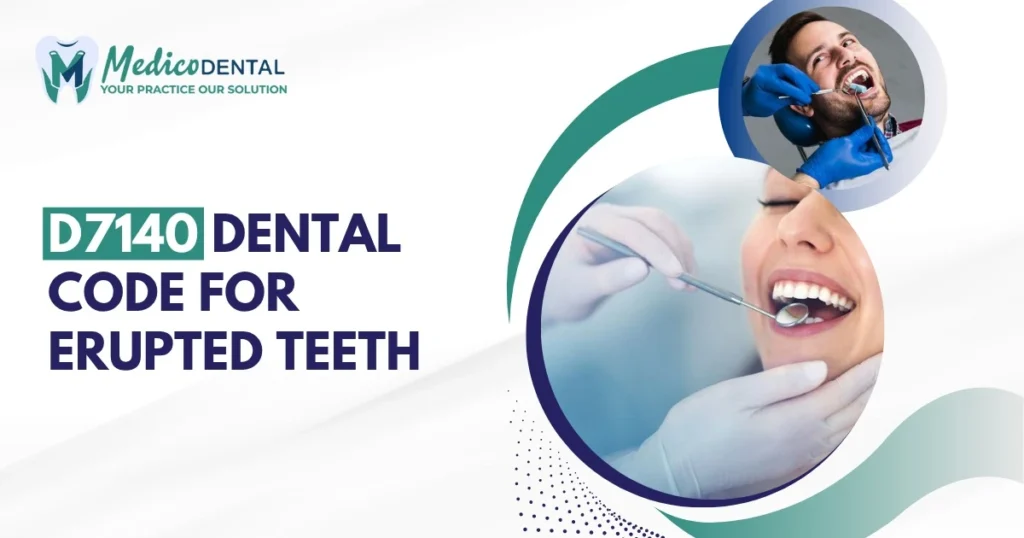The D4910 Dental Code plays a critical role in the world of periodontal care. If you’re a dentist, hygienist, or dental office manager, understanding and correctly applying the D4910 code ensures that you maintain accuracy in billing, maximize insurance reimbursements, and follow industry standards for treatment documentation. For patients, it ensures that periodontal maintenance procedures are effectively communicated and billed to their insurance providers, leading to a smoother treatment process.
Overview of D4910 Code
The D4910 code is used to describe periodontal maintenance procedures. This procedure typically follows active periodontal therapy, such as scaling and root planing, and is designed to maintain the health of the gums and teeth to prevent the recurrence of gum disease. Unlike routine cleanings, periodontal maintenance focuses on deeper cleaning and monitoring of the gums to ensure that the patient maintains healthy teeth and gums.
Importance of Proper Coding in Dentistry
Proper coding is vital in dentistry, especially for procedures that require consistent monitoring and follow-up care, like periodontal maintenance. When D4910 is used accurately, it ensures that the services provided are properly reimbursed by insurance companies and are compliant with dental insurance policies. Failing to apply the correct code can lead to denied claims, delayed payments, or even legal implications for billing inaccuracies. Clear documentation, accurate coding, and understanding of the specific services included under D4910 contribute to the smooth functioning of any dental practice.
What is the D4910 Dental Code?
D4910 is the specific dental code used to bill for periodontal maintenance. This procedure is typically performed for patients who have previously undergone active periodontal treatment (e.g., scaling and root planing). The primary goal of D4910 is to help maintain the results of those treatments by keeping the gums healthy and preventing the recurrence of periodontal disease.
Definition and Purpose of D4910
The purpose of D4910 is to continue the care and maintenance of a patient’s periodontal health after the initial treatments. This includes deep cleaning and monitoring for signs of gum disease, specifically removing plaque and tartar from below the gumline, areas that regular cleanings (such as the D1110 code) may not address. The key aim is to ensure that the gums remain healthy and free of infection, which can otherwise lead to tooth loss and other severe dental issues.
How D4910 Relates to Periodontal Maintenance
Periodontal maintenance with D4910 is essential for maintaining the health of the gums and surrounding bone structure. It is different from routine prophylaxis (D1110) because it addresses the deeper structures of the gum and is intended for patients who have a history of periodontal disease. It is a crucial procedure for maintaining a stable and healthy oral environment after active treatment has been completed, ensuring that the disease does not return and the patient does not require further invasive treatments.
When is D4910 Used?
D4910 is used primarily for patients who have previously been treated for periodontal disease (often using scaling and root planing). These patients need regular maintenance to prevent the disease from returning and to ensure ongoing health of their gums and teeth.
Indications for Using D4910
The main indication for using D4910 is for patients who have had active periodontal therapy and are now in a maintenance phase. This includes:
- Post-scaling and root planing procedures where there’s a need for ongoing monitoring.
- Patients with a history of periodontal disease who require ongoing professional care.
- Routine maintenance for healthy gums after successful treatment of active gum disease.
Post-therapy Maintenance and Monitoring
Post-therapy maintenance is critical for ensuring that patients continue to experience the benefits of their periodontal treatment. After undergoing deep cleaning or more invasive treatments, patients must follow up regularly to ensure that the disease does not return. This maintenance is often lifelong and helps manage any potential periodontal disease from advancing to more severe stages, ensuring the long-term health of the teeth and gums.
D4910 vs. Other Periodontal Codes
When it comes to periodontal care, D4910 is not the only code used. There are other relevant codes, like D1110 (Prophylaxis), that serve different purposes. Understanding the distinctions between these codes is vital for accurate billing and proper patient care.
Comparison with D1110 (Prophylaxis)
The D1110 code refers to a routine cleaning, also known as prophylaxis, which is performed on healthy teeth. This is suitable for patients without a history of periodontal disease, whereas D4910 is specifically used for patients who have received treatment for gum disease and need ongoing maintenance to prevent its recurrence.
Key Differences
D1110 (Prophylaxis)
D1110 (Prophylaxis) Used for patients with healthy gums and no periodontal disease. It focuses on removing plaque and tartar above the gumline.
D4910 (Periodontal Maintenance)
D4910 (Periodontal Maintenance) Used for patients with a history of periodontal disease, focusing on maintaining gum health by deep cleaning beneath the gumline and monitoring the ongoing health of the gums.
Key Differences and When to Use Each Code
The difference between D4910 and D1110 lies in the patient’s history and the extent of care required. D1110 is a preventive treatment suitable for those without a history of gum disease, while D4910 is reserved for patients who have been treated for periodontal disease and need continuous maintenance to keep their condition under control.
Understanding when to apply each code is crucial. Misapplication could lead to reimbursement issues, as insurance companies will typically reimburse for D4910 only in cases where the patient has a history of periodontal disease, and D1110 for those without it.
How to Properly Code D4910 for Insurance Billing
Properly coding D4910 for insurance billing is essential for ensuring that dental practices get paid accurately and promptly for periodontal maintenance services. It involves knowing when and how to apply the code, keeping track of time, and making sure all documentation is correct.
Verify the Patient’s Eligibility
Before starting the procedure, make sure the patient’s insurance covers D4910. Some insurance plans may have specific requirements or limitations regarding periodontal maintenance coverage.
Confirm the Need for Periodontal Maintenance
D4910 is only applicable for patients who have received active periodontal treatment (such as scaling and root planing) and are now in the maintenance phase. Make sure this is properly documented in the patient’s treatment plan.
Accurate Time Tracking
D4910 is a time-based code, meaning that the billing is done in 15-minute increments. Keep a detailed record of the time spent with the patient during the procedure and ensure the billing matches the time spent.
Documenting Services Rendered
You must document all therapeutic procedures performed during the visit, including the specific areas treated and the purpose of the procedure (i.e., to maintain periodontal health and prevent recurrence of gum disease).
Use Correct Diagnosis Codes
Use the proper diagnosis codes related to the patient’s condition to justify the need for periodontal maintenance. For example, include periodontal disease diagnosis codes or post-treatment codes to show that D4910 is medically necessary.
Steps for Proper Documentation
Proper documentation is key to ensuring smooth billing and avoiding denials from insurance companies. Here’s what should be included in the documentation:
Detailed Patient History
Include relevant details about the patient’s history of periodontal disease and the treatments they’ve previously received. This helps establish the necessity for D4910.
Procedure Notes
Write detailed notes about the periodontal maintenance performed, including what was done during the appointment (e.g., deep cleaning, plaque removal, etc.).
Time Records
Clearly document the time spent with the patient. For D4910, billing is based on 15-minute increments, so accurate time tracking is vital for correct billing.
Progress Notes
Include updates on the patient’s periodontal health and the effectiveness of previous treatments. This helps demonstrate that the maintenance is medically necessary.
Diagnosis and Treatment Plan
Always link the procedure to a valid diagnosis (e.g., periodontal disease) and describe the treatment plan. This will show why D4910 is the appropriate code to use.
Common Mistakes to Avoid in Billing D4910
Proper coding and billing require attention to detail. Here are some common mistakes to avoid:
Using the Wrong Code
Don’t confuse D4910 with D1110 (Prophylaxis). D4910 is for patients who have had previous periodontal therapy and need ongoing maintenance. D1110, on the other hand, is for healthy patients needing a routine cleaning.
Incorrect Time Tracking
Since D4910 is time-based, failing to accurately record the amount of time spent on the procedure can lead to under-billing or over-billing. Make sure each session is tracked in 15-minute increments.
Lack of Proper Documentation
Failing to document all the necessary information such as the patient’s condition, treatment performed, and time spent can result in claim denials.
Not Verifying Insurance Coverage
Make sure to confirm that the patient’s insurance covers D4910 before proceeding with treatment. Some plans may have limitations or may not cover periodontal maintenance, which could lead to unexpected charges for the patient.
Insurance Coverage for D4910
Understanding insurance coverage for D4910 is crucial for both dental providers and patients. Coverage can vary widely depending on the insurance verification plan and the patient’s history.
Does Insurance Cover D4910?
In general, D4910 is covered by most dental insurance plans if the patient has a history of periodontal disease and has completed active treatment (such as scaling and root planing). However, the exact coverage depends on the individual policy and its terms.
Some insurance companies may require additional documentation or prior authorization before covering D4910, especially if the patient is new or has not had recent treatment for periodontal disease.
Factors Affecting Reimbursement for Periodontal Maintenance
Several factors affect the reimbursement for D4910
Patient’s Insurance Plan
Not all insurance plans cover D4910. Some may limit the number of maintenance procedures covered per year or have additional requirements.
Frequency of Treatment
Some insurance companies limit the number of D4910 treatments a patient can receive annually, typically based on the severity of their condition or the success of previous treatments.
Medical Necessity
Insurers will often only cover D4910 if it is medically necessary. This means that the patient’s periodontal health must be regularly monitored and maintained to prevent the recurrence of gum disease.
Proper Documentation
Comprehensive documentation proving the necessity of periodontal maintenance can improve the chances of reimbursement. Be sure to provide detailed treatment notes and a diagnosis that supports the use of D4910.
Conclusion
Accurate coding, like correctly applying D4910, is vital to the financial health of a dental practice. By ensuring the right codes are used and maintaining thorough documentation, dental practices can streamline their billing processes, reduce errors, and improve the likelihood of timely reimbursement. This not only helps maintain a strong relationship with insurance companies but also ensures that patients receive the necessary care for their ongoing oral health.
D4910 is essential for maintaining the health of patients with a history of periodontal disease.Accurate documentation and time tracking are critical to ensure proper reimbursement for periodontal maintenance services.Insurance coverage varies, so always verify eligibility before proceeding with treatment.By avoiding common billing mistakes and ensuring proper use of D4910, dental professionals can ensure smooth claims processing and minimize claim denials.
FAQs
How do I know if D4910 is the right code?
Ans. D4910 should be used if the patient has received prior active periodontal therapy and is now in a maintenance phase to prevent gum disease recurrence. It’s not for patients with healthy gums or those who require only a routine cleaning.
Can I bill for D4910 without performing scaling and root planing?
Ans. No, D4910 is used only for patients who have previously undergone active periodontal treatment (like scaling and root planing). If the patient has not had this therapy, the code should not be used.
What happens if I bill D4910 incorrectly?
Ans. Incorrect billing can lead to claim denials or delays in payment. To avoid this, always ensure proper documentation and verify that D4910 is the correct code based on the patient’s treatment history and insurance coverage.



